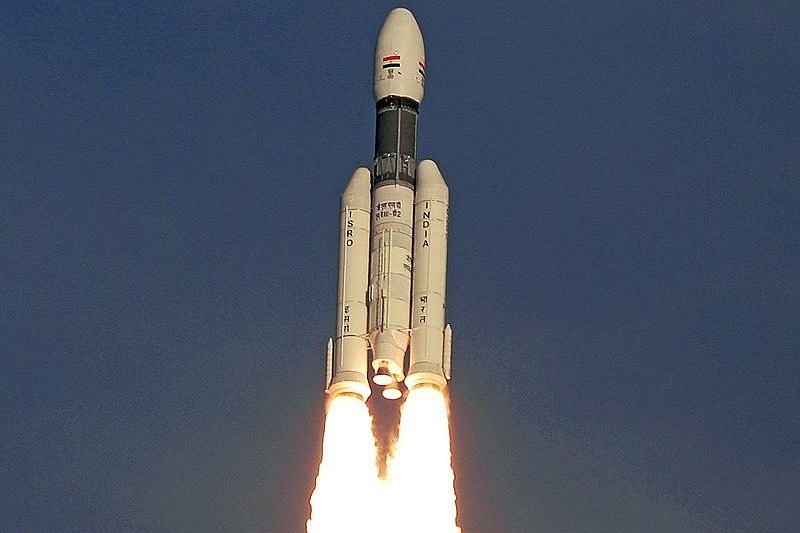Insta
ISRO Set To Launch GSAT-31 From French Guiana on 6 February Replacing The Ageing INSAT-4CR

A GSLV Mk III D2 rocket launching from the Satish Dhawan Space Centre, Sriharikota. (representative image) (image- Indian Space Research Organisation/GODL-India via Wikimedia Commons)
The Indian Space Research Organisation (ISRO) has planned to launch the GSAT-31 communication satellite from the French Guiana on 6 February, the Times of India reports.
The report quotes ISRO Chairman K Sivan saying, “GSAT-31 is a high-throughput communication satellite planned for launch from Arianespace, French Guiana on 6 February.” He adds the GSAT-31 will replace the fading INSAT-4CR and will be used for high-speed internet, telecommunication services and broadcasting.
Sivan also said that the space agency plans to operationalise the PSLV- C45 in March. which will, in turn, launch the advanced electronic intelligence satellite EMISAT.
After EMISAT, ISRO will launch the earth observation satellite Cartosat-3 in the PSLV-C46 mission, followed by the radar imaging satellite RISAT 2BR 1 in the PSLV-C47 for reconnaissance and strategic surveillance. Scientists from the Vikram Sarabhai Space Center (VSSC) said that the dates are yet to be finalised.
The 2,600 KG-satellite GSAT-31 will be launched in the Geosynchronous Satellite Launch Vehicle (GSLV-MK III), which is also stated to thrust the second moon mission Chandrayaan-2 in April. VSSC scientists said that the Chandrayaan-2 would be a complete indigenous project and includes an Orbiter, Lander and Rover.
For the mission to the moon, the spacecraft weighing 3,980 KG would be launched using the GSLV-MK III, which would orbit the moon, studying its conditions while collecting data of the moons surface, minerals and exosphere.
The spacecraft, after touching the 100-km lunar orbit, will detach the lander, know as “Vikram” which will slowly descent to make a soft landing at a selected spot on the moon. The lander will, then, deploy a six-wheeled rover. The instruments in the rover will then observe and study the surface of the moon.
Support Swarajya's 50 Ground Reports Project & Sponsor A Story
Every general election Swarajya does a 50 ground reports project.
Aimed only at serious readers and those who appreciate the nuances of political undercurrents, the project provides a sense of India's electoral landscape. As you know, these reports are produced after considerable investment of travel, time and effort on the ground.
This time too we've kicked off the project in style and have covered over 30 constituencies already. If you're someone who appreciates such work and have enjoyed our coverage please consider sponsoring a ground report for just Rs 2999 to Rs 19,999 - it goes a long way in helping us produce more quality reportage.
You can also back this project by becoming a subscriber for as little as Rs 999 - so do click on this links and choose a plan that suits you and back us.
Click below to contribute.
Latest